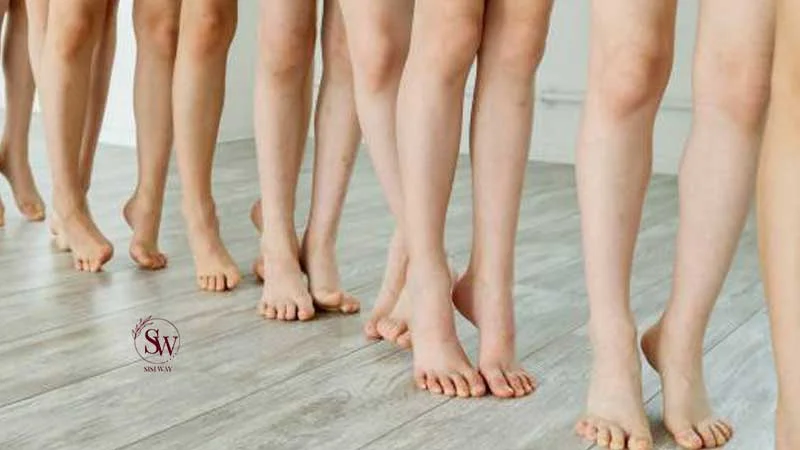When does a Woman Stop Growing?

In the realm of human development, the question of when a woman stops growing is a common inquiry. Height plays a significant role in shaping one’s physical appearance and can have implications on various aspects of life. In this article, we will explore the factors that contribute to the cessation of growth in women and delve into the science behind it.
Puberty and Growth Spurts
During puberty, both boys and girls experience growth spurts, marked by a rapid increase in height. For girls, this period usually occurs between the ages of 9 and 14. The growth plates, located at the ends of long bones, are responsible for this surge in height. Once these growth plates close, the individual stops growing taller.
Genetic Factors
Genetics plays a pivotal role in determining a person’s height. If parents are of average height, likely, their offspring will also fall within the average height range. The growth potential inherited from parents can influence when a woman reaches her maximum height.
Nutrition and Health
Adequate nutrition is essential for proper growth. Malnutrition or poor health during childhood and adolescence can potentially stunt growth. Calcium, vitamin D, and other micronutrients are particularly crucial for bone development. A balanced diet ensures that the body has the necessary resources for optimal growth.
Hormonal Influences
Hormones, such as growth hormone and estrogen, play key roles in the growth process. Growth hormone stimulates the growth of bones and cartilage, while estrogen contributes to the closure of growth plates. The interplay between these hormones influences the growth patterns in girls.
Menstruation and Growth

Menstruation is another significant milestone in a woman’s life that can impact growth. The onset of menstruation, typically around the age of 12 or 13, indicates the closure of growth plates. This biological process is orchestrated by hormonal changes that affect both physical and emotional development.
Average Height Statistics
According to the World Health Organization (WHO), the average height for women varies across different countries. In the United States, for instance, the average height for adult women is approximately 5 feet 4 inches (162.6 cm). These statistics provide a general overview of average heights but may not capture individual variations.
Case Studies and Research Findings: Numerous scientific studies have explored the factors influencing the cessation of growth in women. A study published in the Journal of Clinical Endocrinology and Metabolism found that the closure of growth plates is strongly associated with the fusion of specific bone centers. Research findings contribute valuable insights into the understanding of growth patterns.
Factors That Can Affect Growth Potential
Apart from genetic and hormonal factors, external elements such as chronic illness, stress, and exposure to certain medications can impact growth potential. Consulting with a healthcare professional can help address concerns related to growth and rule out underlying health issues.
When do Breasts Stop Growing?
Puberty and Breast Development
Alongside overall body growth during puberty, girls experience specific changes in breast development. The growth of breasts is typically one of the earliest signs of puberty, starting around the ages of 8 to 13. During this time, the mammary glands develop, and breast tissue begins to form.

Hormonal Factors in Breast Growth: Hormones, particularly estrogen, progesterone, and growth hormone, play a crucial role in the development of breasts. Estrogen stimulates the growth of breast tissue, and progesterone further promotes the formation of milk glands. The hormonal fluctuations during the menstrual cycle also contribute to changes in breast size and fullness.
Completion of Breast Development
Breast development continues throughout puberty and can extend into the late teens or early twenties. While there is no specific age at which breast development concludes for all women, it generally stabilizes a few years after the onset of menstruation. Complete breast development is a gradual process influenced by genetics and hormonal balance.
Individual Variations in Breast Size
Just as with overall height, there is significant variability in breast size among women. Genetics, hormonal factors, and body composition all contribute to individual differences. Some women may experience more prolonged breast development, while others may see earlier stabilization in size.
Factors Affecting Breast Growth
Factors such as weight fluctuations, pregnancy, and breastfeeding can influence breast size. Weight gain can lead to an increase in fatty tissue in the breasts, contributing to a change in size. Pregnancy and breastfeeding also cause temporary changes in breast size, but these changes are unrelated to the completion of puberty.
Consulting Healthcare Professionals: If there are concerns about breast development or size, consulting with healthcare professionals, such as gynecologists or endocrinologists, can provide valuable insights. These professionals can assess hormonal balance, and overall health, and address specific questions about breast development.
When do Girls’ Feet Stop Growing?

Foot Growth During Puberty
Similar to overall body growth and breast development, girls also experience changes in the size and structure of their feet during puberty. The growth plates in the bones of the feet, like those in other long bones, contribute to this process. Typically, foot growth occurs in conjunction with the overall growth spurt during puberty.
Age Range for Foot Growth

Girls usually start puberty between the ages of 8 and 13, and foot growth is part of this developmental stage. The growth of the feet tends to continue throughout puberty and often into the late teens. However, just as with height and breast development, the exact age at which foot growth ceases can vary among individuals.
Influence of Genetics on Foot Size: As with height and breast size, genetics play a significant role in determining foot size. The size of a girl’s feet is often influenced by the foot size of her parents. While genetic factors set the baseline, other environmental factors, such as nutrition and overall health, can impact the extent of foot growth.
Also Read: What is My Body Shape?
FAQs:
- Is it possible for a woman to continue growing after puberty?
While it is uncommon, some women may experience a slight increase in height after puberty. Factors such as improved nutrition, health, and hormonal balance can contribute to this phenomenon. - Can lifestyle choices affect a woman’s growth?
Yes, lifestyle choices such as maintaining a healthy diet, regular exercise, and avoiding habits like smoking can positively influence overall health and potentially impact growth. - What role do genetics play in determining a woman’s height?
Genetics plays a significant role in determining height. The combination of genetic factors inherited from both parents influences an individual’s growth potential. - Can certain exercises influence breast growth?
Exercises targeting the chest muscles may enhance the overall appearance of the breasts but do not directly impact breast tissue growth. Breast size is primarily determined by genetics and hormonal factors. - Can certain activities, like sports, impact foot growth?
Engaging in sports and physical activities does not directly impact foot size. However, it is essential to wear appropriate footwear to provide proper support and prevent injuries during these activities. - How can parents ensure proper foot development in growing girls?
Ensuring well-fitted and supportive footwear, monitoring foot size during growth spurts, and seeking professional advice if there are concerns are essential steps in promoting healthy foot development.
Conclusion:
The growth trajectory of women is a complex interplay of genetic, hormonal, and environmental factors. Understanding when a woman stops growing involves recognizing the significance of puberty, genetics, nutrition, and overall health. While there are average height statistics, individual variations exist, and lifestyle choices can play a role in optimizing growth potential. For personalized advice and concerns, consulting with healthcare professionals is crucial to ensure overall well-being.




